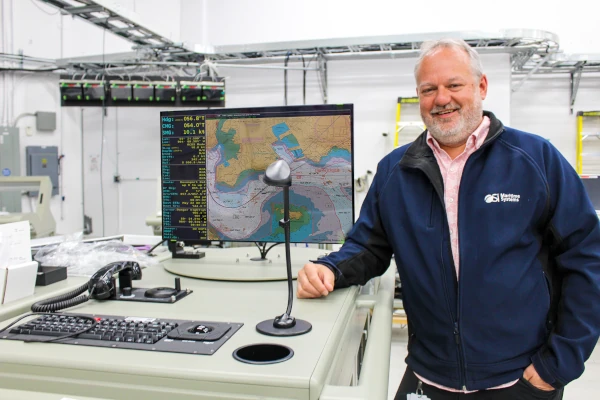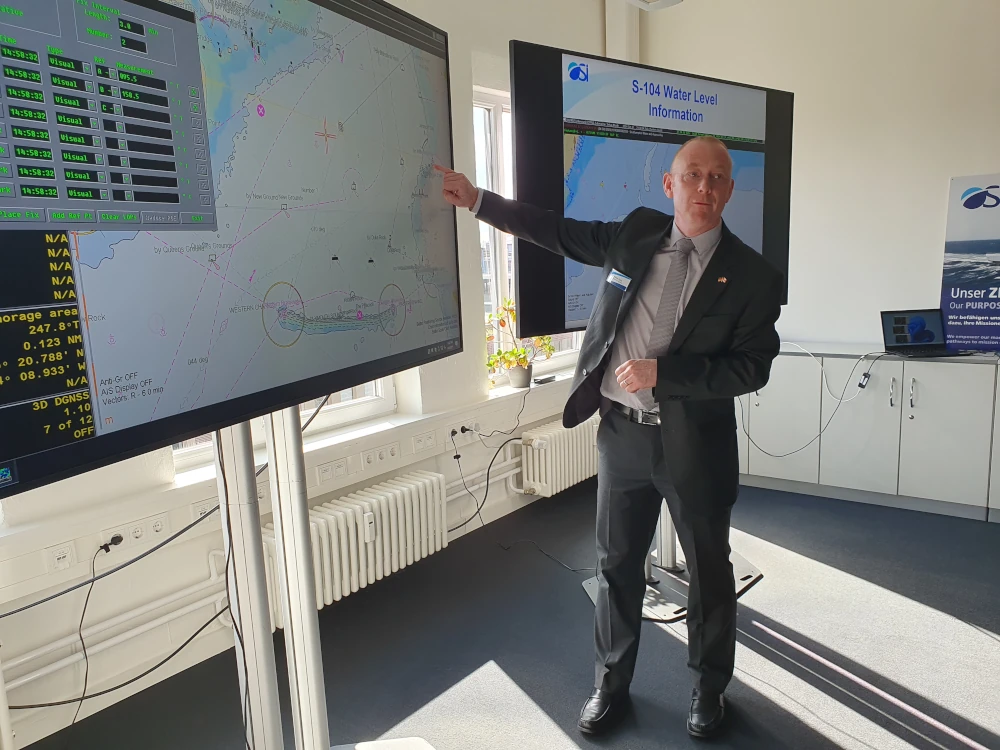
Jim Girard joined OSI Maritime Systems in July 2007. He was appointed President and CEO in April this year, having served before as OSI’s Chief Operating Officer and, before that, Chief Financial Officer. Before joining OSI, Jim Girard built a distinguished career in the financial sector, holding senior positions at PricewaterhouseCoopers, Ernst & Young and a major Middle Eastern bank.
The worldwide recognised Canadian specialist for Integrated Navigation and Bridge Systems (INBS) headquartered in Burnaby, British Columbia, has been providing electronic chart systems to the maritime market since 1979. Over more than 45 years, the company has extended its global business to include integrated bridge systems for warships, command-and-control systems for small patrol craft and integrated dived navigation systems for submarines. OSI currently has 26 naval customers from around the world with more than 700 warships and submarines operating with its world-leading integrated navigation and tactical solutions.
Interview: Stefan Nitschke
Photos: OSI Maritime Systems; Babcock International; Mönch Publishing Group/Stefan Nitschke
Naval Forces: When OSI Maritime was founded in 1979, the market for maritime navigation was pioneered by the first electronic mapping display software. What has happened technologically since the late 1970s? And what‘s OSI’s role in the process?
Jim Girard: The evolution of electronic navigation has undergone remarkable transformation, and OSI has been a driving force. Since the 1970s, navies have adopted a wide range of electronic navigation and positioning aids, enhancing the safety and efficiency of navigation. Systems such as GPS, radar and sonar have become indispensable for safe navigation and collision avoidance, and OSI has led the way in in ECDIS [Electronic Chart Display Information Systems], and its own system, ECPINS [Electronic Chart Precise Integrated Navigation System], has fundamentally changed how data is gathered and presented in an electronic format for immediate application.
Furthermore, OSI has been at the forefront of military bridge design. In the past, bridges hosted siloed consoles that provided isolated information for specific functions or sensors. Today, OSI delivers scalable solutions that integrate all data inputs, merging information and customizing outputs to align precisely with the navigator’s requirements. OSI is not just part of the change; we have actively shape the future of navigation technology.
Naval Forces: Today, OSI Maritime has positioned itself as a global leader in naval integrated navigation and tactical solutions. Where do you currently stand in an international industry comparison?
Jim Girard: OSI is the leader in integrated navigation and tactical solutions. We are uniquely focused on NATO and allied navies and presently have 26 navy customers, ten of which deploy OSI systems fleet wide, and in Europe, we are the de facto WECDIS. While we do face competition, our expertise in warship integrated bridge systems [IBS] and WECDIS sets us apart as the most experienced provider in the field.
Naval Forces: One specific software product – ECPINS – plays a crucial role for the naval navigator. What’s behind this technology in particular?
Jim Girard: ECPINS has benefited from over 35 years of continuous improvement and development. Through constantly engaging and close collaboration with our customers, it has been optimised for the operational customer. As an ECDIS, it was first type approved in 2003 and is now the only WECDIS third-party type approved against NATO WECDIS STANAG 4564. As we move forward, ECPINS will have a new interface in Ed. 8, offering users a highly intuitive and optimised interface, and presently, an AI [artificial intelligence]-based capability collision avoidance decision aid, is being developed.

Naval Forces: What other product solutions are on offer for the demanding naval/maritime customer?
Jim Girard: OSI offers a comprehensive suite of integrated navigation and tactical solutions for naval customers, supporting both surface and subsurface fleets. These scalable solutions are designed to meet the needs of a wide range of vessels – from small craft such as RHIBs [rigid hull inflatable boats] and fast attack boats to larger platforms like frigates and aircraft carriers. Core systems include OSI’s Warship Integrated Bridge System [INTS], a bespoke bridge system used across NATO and allied fleets, designed for both new builds and retrofits. Additionally, OSI offers the Tactical Dived Navigation System, which features advanced capabilities for operations in GNSS-denied environments. There is also the Tactical Asset Control and Tracking [T-ACT] system for coordinating small craft, along with the Integrated Mission Management System [IMMS]. The IMMS is a C4ISR platform that enhances situational awareness and supports gunfire optimization for small boats.
All OSI solutions are underpinned by in-service support and training programmes, ensuring optimal performance and effective operational use across all platforms.
Naval Forces: Where does OSI Maritime see its main sales markets today and in the future? Are NATO member states the premier customer nations?
Jim Girard: OSI’s customer base is NATO and allied navies. We generally see deployment of our systems across mature, well-established navies; at the same time, we are increasing penetration into navies that recognise a need to modernise and deploy advanced modern tactical navigation systems. In sum, our growth could be generalised as coming from NATO and allied fleets with strength particularly in Europe and Asia. In addition, the company has a Taiwanese operation.
Naval Forces: What about the Asia-Pacific region, where there will be more investment in the modernisation of naval/maritime forces in the coming years?
Jim Girard: The Asia-Pacific region represents a strategically significant growth area, particularly in light of anticipated increases in investment toward the modernisation of naval and maritime capabilities. OSI has successfully established a foothold with key regional naval forces, including those of Malaysia, Singapore, Indonesia and India. Continued engagement and expansion within this dynamic defence market are expected.
During a ceremony on 8 April, OSI Maritime Systems officially opened its newest office in the city of Kiel on the Baltic Coast. This strategic expansion will strengthen OSI’s presence in the region and ensure close proximity to its German customers and the company’s local industry partners. OSI owns leading expertise in the fields of WECDIS and integrated bridge and IBNS, supplying ‘high-end’ products and expertise to the majority of the German fleet, including the Type F126 (Niedersachsen class) frigate plus more than 35 surface combatants as part of the Navy’s Type K130 Batch 1 (Braunschweig class) and RadEA navigation suite upgrade programmes. OSI is also providing ECPINS military-grade software for surface combatants and submarines, as well as WECDIS to the German BAAINBw procurement agency and the Naval Operations Schools for navigation training.